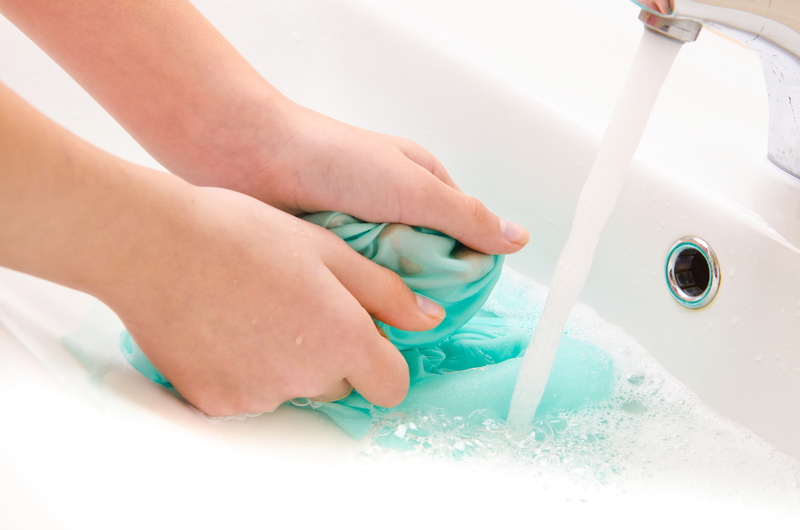Mastering the Art of Efficient Window Cleaning
Posted on 13/09/2025
Mastering the Art of Efficient Window Cleaning
When it comes to home improvement and maintaining a positive impression, sparkling clean windows play a pivotal role. Efficient window cleaning is both a skill and a science, requiring the right tools, strategies, and techniques. Whether you're a DIY enthusiast or a professional cleaner, learning the art of effective window washing not only enhances the beauty of your property but also prolongs the life of your glass. In this comprehensive guide, we'll uncover everything you need to master window cleaning efficiently, from choosing the best products to advanced tips and eco-friendly solutions.

Why Clean Windows Matter
Clean windows are the gateways to natural light, bringing warmth and ambiance into your rooms. Dirty or streaked glass, on the other hand, can reduce indoor light, create a dull appearance, and even harm your windows in the long run. Regular window maintenance:
- Enhances curb appeal and overall property value.
- Improves energy efficiency by letting in more natural light, reducing reliance on artificial lighting.
- Promotes a healthier environment by removing dust, allergens, and pollutants.
- Prevents long-term damage such as hard water stains, mineral buildup, and corrosion on frames and glass.
Taking the time to clean your windows effectively will pay off in the long run, ensuring you get the most out of your living or workspaces.
Essential Tools for Pro-Quality Window Cleaning
Before you delve into efficient window cleaning, gather the necessary tools to ensure a job well done:
- Squeegee: The backbone of any window washer's toolkit, a rubber-bladed squeegee sweeps away dirt and water without streaks.
- Microfiber cloths: Perfect for buffing and removing stubborn marks without scratching glass.
- Bucket: Any sturdy bucket will do for mixing your cleaning solution.
- Scrubber or sponge: For loosening dirt and grime, especially on exterior windows.
- Extension pole: Essential for cleaning hard-to-reach second-story or high windows safely from the ground.
- Cleaning solution: Choose between commercial window cleaners or DIY mixes (we'll discuss these below).
- Lint-free towels or chamois: For drying window edges and frames.
Equipping yourself with these quality tools lays the groundwork for fast and flawless window cleaning.
Choosing the Right Window Cleaning Solution
Commercial vs. Homemade Solutions
Selecting an effective window cleaning solution is vital to achieving streak-free clarity. Commercial cleaners like Windex are powerful and convenient, but homemade solutions can be equally effective and eco-friendly. The most popular DIY recipe involves:
- 2 cups of water
- 1/2 cup of white vinegar
- 1/4 cup of rubbing alcohol
- A few drops of dish soap
Mix these ingredients in a spray bottle for an affordable, powerful, and nature-friendly cleaner. The vinegar cuts through mineral deposits and leaves glass gleaming.
Green Cleaning Innovations
Eco-conscious consumers may also prefer plant-based cleaners free from ammonia and harsh chemicals. Not only do these protect your family and the environment, but they also preserve window seals and frames from chemical wear.
Step-by-Step Guide to Efficient Window Cleaning
1. Preparation for Fast and Safe Cleaning
Start by gathering all your supplies in one accessible location. Remove window screens and dust the frames and sills to prevent extra debris from muddying your clean windows later. For inside windows, place a towel or drop cloth beneath the area to catch drips.
2. Dusting and De-griming
Using a duster or vacuum brush attachment, remove cobwebs and dry dust from frames and sills. This prevents dirt from turning into stubborn paste when wet.
3. Washing the Windows
Apply your cleaning solution generously, starting from the top of the window and working down. Use your scrubber or sponge in circular motions to lift away dirt, paying special attention to corners and edges.
4. The Squeegee Technique
For a professional window cleaning finish, use a squeegee. Start at the top left corner and draw the squeegee down the glass in a straight line. Wipe the blade with a clean cloth between each pass to prevent streaking. Overlap each stroke slightly for a flawless finish.
5. Finishing Touches
Use a microfiber cloth or chamois to polish away lingering streaks and dry the window edges. Replace screens, and double-check for any missed spots or smudges.
Advanced Tips for Mastering Window Cleaning Productivity
How Often Should You Clean Your Windows?
Frequency depends on local environment - homes in dusty or pollen-heavy areas may require monthly cleaning, while others can thrive with quarterly sessions. Regular maintenance prevents stubborn buildup, making each cleaning faster and easier.
Weather and Timing: When to Clean Your Windows
For the most efficient results, choose a cloudy day or work during cooler morning hours. Direct sunlight causes cleaning solutions to dry too quickly, leaving streaks. Overcast conditions allow for more leisurely, methodical cleaning.
Dealing with Hard Water Stains and Stubborn Marks
Mineral deposits are a common headache, especially on exterior windows. If traditional cleaner isn't enough, try these methods:
- Lemon juice: The acidity naturally breaks down lime and calcium deposits.
- Baking soda paste: Scrub gently with a damp sponge for persistent stains.
- Commercial hard water removers: Use with caution, following manufacturer's instructions.
Reaching High Windows Safely
Rather than risking a fall with a ladder, invest in an extension pole for your squeegee and scrubber. Many modern attachments offer angle adjustments for improved reach and safety. If you must use a ladder, ensure it is stable, dry, and always work with a partner if possible.
Cleaning Window Tracks and Frames
Dirty window tracks can cause sticky operation and welcome mold.
- Vacuum tracks using a nozzle attachment.
- Scrub with a mix of vinegar and baking soda, using an old toothbrush for crevices.
- Wipe clean and dry thoroughly to prevent future grime buildup.
Professional Window Cleaning Secrets
Speed and Efficiency Hacks
The best window cleaning professionals rely on a few key tricks:
- Use two buckets - one for cleaning solution, one for rinsing dirty tools.
- Work from the top down to prevent drips from soiling clean areas below.
- Avoid using paper towels, which leave lint and can cause static buildup.
- Blades and cloths should be immaculately clean to prevent scratches.
- Master the one-pass squeegee technique for faster, streak-free results.
Protecting Window Frames and Surroundings
Wood and aluminum frames can be damaged by harsh chemicals and excess moisture. Always use a damp - not soaking - sponge, and immediately dry frames after washing. Mask off nearby walls or floors if you're working indoors to prevent accidental stains.
Specialized Window Types: Cleaning Tips
How to Clean Double-Glazed and Tinted Windows
Double-glazed windows require gentle care - avoid abrasive pads that can cause scratches. For tinted glass, use only ammonia-free cleaners, as ammonia can degrade tints over time.
Handling Specialty Windows: Skylights and French Doors
Clean skylights and large glass doors in sections, working in horizontal strips. For panes with intricate frames, such as French windows, use a small, sharp-edged squeegee to fit each panel and a soft brush for detailed work.
Eco-Friendly and Safe Window Cleaning Practices
Today's efficient window washing includes a commitment to sustainability and personal safety. Consider these green practices:
- Use biodegradable, plant-based cleaners.
- Repurpose old t-shirts or towels as lint-free buffs.
- Minimize water use by employing spray bottles instead of soaking cloths.
- Ventilate rooms when working indoors, especially with commercial products.
- Properly dispose of any cleaning waste or packaging.

Frequently Asked Questions about Window Cleaning Efficiency
Is Vinegar the Best Cleaning Agent for Windows?
Vinegar is a proven, natural degreaser that excels at cleaning windows, especially tackling water spots and most grime. However, for very greasy or commercial windows, you may need to supplement with a commercial surfactant or glass cleaner.
Are Newspaper and Paper Towels Good for Windows?
While newspaper has long been touted for streak-free windows, today's soy-based inks can smear on glass. Paper towels, meanwhile, tend to leave lint. Microfiber cloths are superior for both performance and environmental impact.
Should I Clean Windows from the Inside or Outside First?
Always clean the exterior windows first since they're usually dirtier, then move inside. This allows you to spot and correct any streaks or missed spots from a different angle.
How Do I Prevent Streaks on My Windows?
The key to streak-free windows is using a clean squeegee blade, overlapping each stroke, and working on a cloudy day to prevent the solution from drying too quickly.
Conclusion: Achieving Crystal Clear Windows with Efficiency
Mastering the art of efficient window cleaning is not reserved for professionals alone. With the right tools, techniques, and mindset, anyone can enjoy streak-free, crystal clear windows that transform a space. Whether you're motivated by aesthetics, health, energy conservation, or home value, regular and effective window cleaning should be an integral part of your maintenance routine.
So gather your supplies, set aside time on a mild, overcast day, and test these expert methods. With experience, you'll discover that cleaning your windows is not just a chore but an art form - one that brings the best out of your home or workplace, inside and out.
Ready to see the world in a new light? Start mastering efficient window cleaning today!



.png)